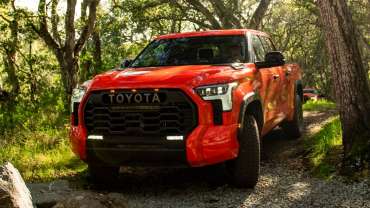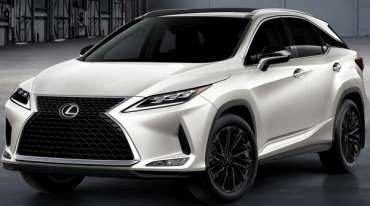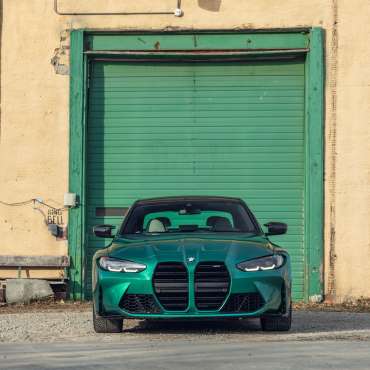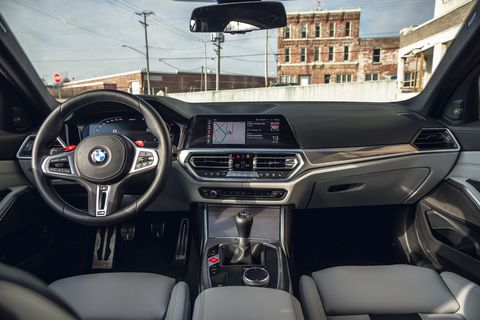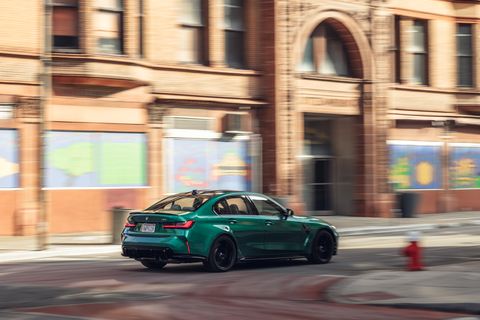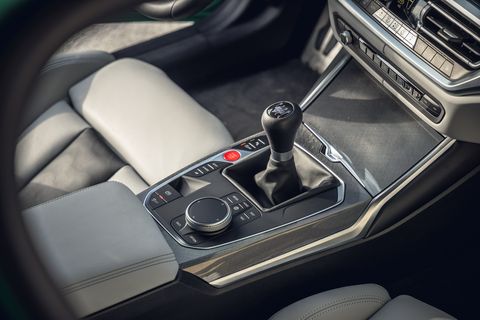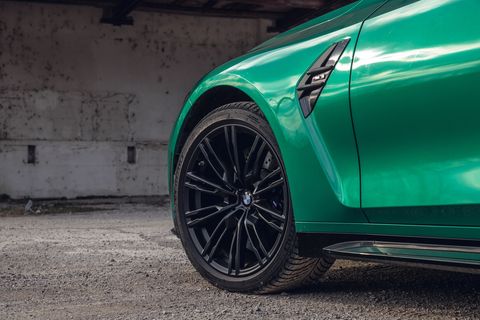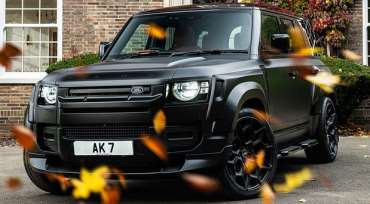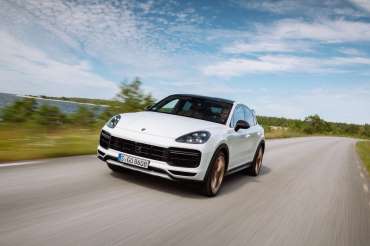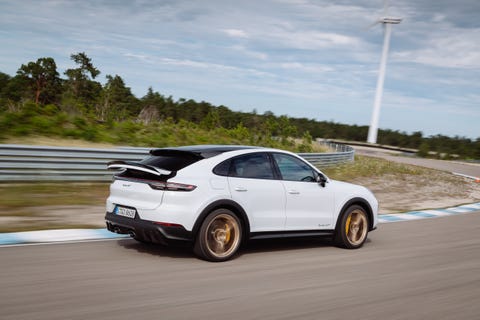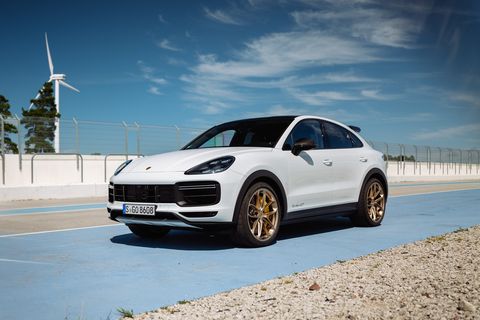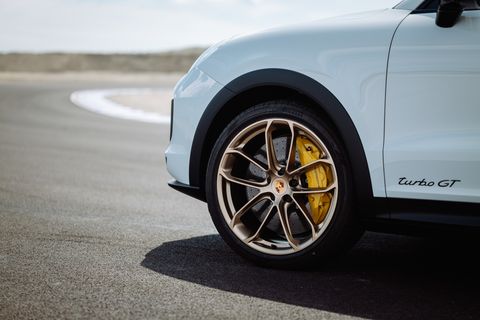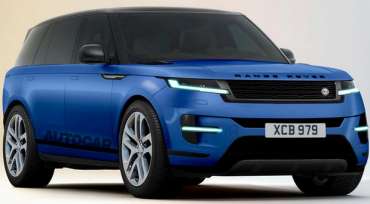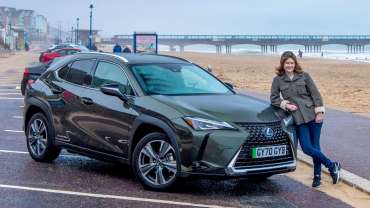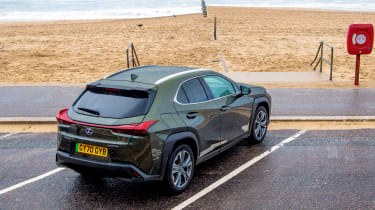Setting Nürburgring lap records in utility vehicles used to be the province of the well funded but perpetually silly—on shows like Top Gear, for instance. Instead of strapping the late, great Sabine Schmitz into a Ford Transit, Porsche has gone even further this time by strapping the brand's most powerful V-8 into the 2022 Cayenne Turbo GT, and the new "SUV, off-road vehicle, van, or pickup" record holder isn't only the king of the 'Ring, it's the quickest SUV we've ever tested.
While a 7:38.9-second Nordschleife lap time is a lofty achievement for any vehicle, it's pushing the limits of our current understanding of physics for a street-legal, 4979-pound SUV. Powering the Cayenne Turbo GT's exploration of the theoretical envelope is a 631-hp, twin-turbocharged 4.0-liter V-8 engine rated at 626 pound-feet of torque with a maximum engine speed of 6800 rpm, backed by Porsche's familiar ZF-sourced eight-speed automatic transmission.
With launch control activated and releasing the brakes just before the boost peaks, the Turbo GT squats and leaps off the line like a bull in a flank strap. It takes just 1.0 second to reach 30 mph. The eight-speed cracks off uninterrupted shifts as 60 mph arrives in a supercar-grade 2.8 seconds. The quarter-mile flies by in 11.1 seconds at 124 mph. Speaking of bulls, the Turbo GT bests the more powerful and expensive Lamborghini Urus by 0.2 second in the quarter-mile and by 0.3 second to 60.
In fact, transparency is the theme with the Cayenne Turbo GT. All of the things that are happening are being orchestrated by a great many systems working in concert behind the scenes, but in such a way that it seems as if it's happening instantaneously and at the sole behest of your fingertips and toes. It's not that any one of the systems in this bonkers Cayenne is so mind-blowing that it resets the benchmark. It's the way they all work together in concert that does.
Front and center in the dynamic show is the very distinctly rear-biased all-wheel-drive system. The Turbo GT-specific setup is capable of sending the same maximum torque to the front axle as the Cayenne Turbo Coupe, but it can do so more quickly and more often, thanks in part to a liquid-cooled transfer case, which was added specifically for track-use robustness, Porsche says.
LOWS: Seats only four, center-exiting exhaust precludes towing.
Track use? Well, yes, and not just for marketing-stunt record laps either. With its XXL pizza-sized carbon-ceramic brake rotors (17.3 inches in front, 16.1 inches in the rear) in the grip of 10-piston front and four-piston rear calipers, the Cayenne Turbo GT stops as hard as you dare and considerably more quickly than you'd think. Stops from 70 mph compete with sports cars, requiring just 151 feet, and 100 mph is deleted in 301 feet. But it's not all brute force and sheer brawn. This is a Porsche, after all. There must be some sophistication.
There is, and it lies in the very last place one might look for it in any SUV, performance or otherwise: the steering wheel. Or perhaps it's the interrelation of the steering wheel and the staggered bespoke Pirelli P Zero Corsa PZC4 gumballs size 285/35R-22 front and 315/30R-22 rear wrapped around immense 22-inch wheels that return 1.05 g's around the skidpad. Whatever the origin, the fact is that the Cayenne Turbo GT's steering is revelatory for an SUV. It's light, almost like Porsche's mid- and rear-engine cars, despite the great honking V-8 hung out front; it's tactile to the point that you can actually sense the subtle changes of surface texture in the road; and yet it's not so full of vibration that it shakes your hands numb in 10 minutes.
Once you've fired up the engine and taken a few rips, tested the brakes, and felt your way through your first apexes, the next thing you're likely to notice is just how good four-wheel steering has become, delivering a nimbleness that belies the Turbo GT's 113.9-inch wheelbase and 194.6-inch overall length. With multilink suspension at all four corners and a ride height 0.7 inch lower than in a Cayenne Turbo Coupe, the Turbo GT manages body roll extremely well, aided by the active anti-roll bars of Porsche's Dynamic Chassis Control (PDCC) system. The Turbo GT's chassis systems inspire enough confidence that sports cars will struggle to keep pace in the canyons. It's that good.
Porsche being Porsche, the damping profile has also been modified for the Turbo GT. Surprisingly, however, no additional body reinforcements or structural enhancements were necessary to reach the Cayenne Turbo GT's performance targets. The weight-saving carbon-fiber roof is the only difference from a standard Cayenne Turbo Coupe's body in white.
Speaking of weight savings, there's a titanium exhaust running from just behind the catalytic converters down the center of the Turbo GT's underside to a pair of center-exit tips that turn a gorgeous shade of blue after they've gotten good and hot once or twice. Porsche claims this saves approximately 40 pounds compared to the already high-performance exhaust of the Cayenne Turbo Coupe. Not only does it save weight and look great, it sounds great too—but only when you want it to. No need to fuss with buttons or settings; just drive like a sane person would and it'll be the strong-but-quiet type. Dip the throttle into slightly aggro territory, and the sound rises from a low growl to an 84-decibel roar.
There's a great deal more sophistication to the Turbo GT too. Left in its base startup mode, this 'Ring-storming record setter is no more likely to spill your coffee or upset the neighbors than a standard Cayenne, which is to say not likely at all. The base price of $182,150 can grow quickly. With its leather-lined interior, the fully loaded example we tested stickered for $208,850. While escalating prices are nothing new for Porsche buyers, take this into consideration: A kitted-out Turbo GT is still about a Chevrolet Spark less than the Lamborghini's starting price.
We expect there's even more depth to the daily-driver capabilities of this SUV, like the fact that it gets the new Porsche Communication Management 6.0 software, which brings wireless Apple CarPlay and wired Android Auto, among other upgrades, but we'd need to spend a lot more time with one to find out. If you're listening, Porsche, we're ready.
Specifications
2022 Porsche Cayenne Turbo GT Coupe
Vehicle Type: front-engine, all-wheel-drive, 4-passenger, 4-door hatchback
PRICE
Base/As Tested: $182,150/$208,850
Options: Burmester 3-D High-End sound system, $5810; adaptive cruise control with lane-keeping assist, $3610; night vison camera; $2420; deviated leather seat centers, $2070; head-up display, $1720; surround view cameras; $1200; thermally and noise insulated glass; $1130; 4-zone climate control, $990; high gloss black brake calipers, $900; ventilated front seats, $850; soft close doors, $780; smartphone compartment with wireless charging; $690; Bordeaux Red seat belts, $660; high gloss black wheels, $600; LED-Matrix design headlights in black, $580; Porsche crest on front and rear headrests; $570; heated windshield; $490; Black and Bordeaux Red two-tone leather interior, $430; ambient lighting, $430; stopwatch dial in Bordeaux Red, $420; ionizer, $350
ENGINE
twin-turbocharged and intercooled DOHC 32-valve V-8, aluminum block and heads, direct fuel injection
Displacement: 244 in3, 3996 cm3
Power: 631 hp @ 6000 rpm
Torque: 626 lb-ft @ 2300 rpm
TRANSMISSION
8-speed automatic
CHASSIS
Suspension, F/R: multilink/multilink
Brakes, F/R: 17.3-in vented, cross-drilled, carbon-ceramic disc/16.1-in vented, cross-drilled, carbon-ceramic disc
Tires: Pirelli P Zero Corsa PZC4
F: 285/35ZR-22 (106Y) N0
R: 315/30ZR-22 (107Y) N0
DIMENSIONS
Wheelbase: 114.0 in
Length: 194.6 in
Width: 78.5 in
Height: 64.5 in
Passenger Volume: 104 ft3
Cargo Volume: 19 ft3
Curb Weight: 4979 lb
C/D TEST RESULTS
60 mph: 2.8 sec
100 mph: 7.0 sec
1/4-Mile: 11.1 sec @ 124 mph
130 mph: 12.4 sec
150 mph: 18.1 sec
Results above omit 1-ft rollout of 0.2 sec.
Rolling Start, 5–60 mph: 4.1 sec
Top Gear, 30–50 mph: 2.5 sec
Top Gear, 50–70 mph: 3.1 sec
Top Speed (mfr's claim): 186 mph
Braking, 70–0 mph: 151 ft
Braking, 100–0 mph: 301 ft
Roadholding, 300-ft Skidpad: 1.05 g
EPA FUEL ECONOMY
Combined/City/Highway: 16/14/19 mpg


